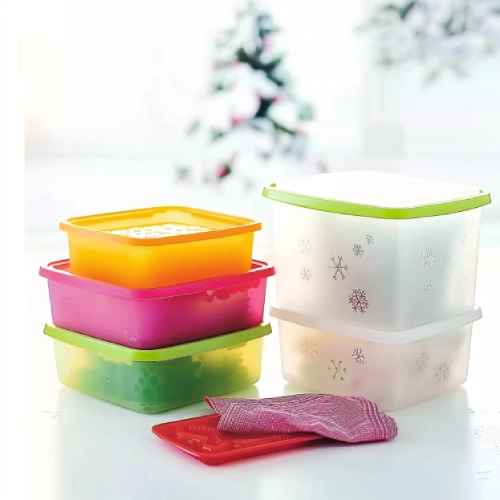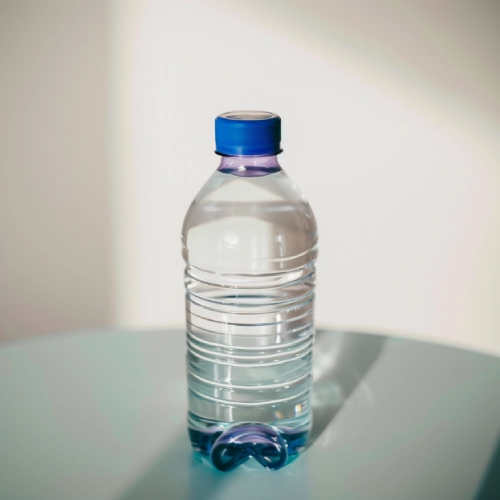
Is it possible to fix cracks in plastic?
The order has finally arrived. The material to be processed is retrieved from the warehouse and loaded onto the machinery. The plastic begins to melt in the burning jaws of the machine. Pigments mix with the resin, imparting brilliant shades. The molten colored plastic is pushed into the mold. Quickly, the plastic cools and takes the shape of the mold. The piece is released. There it is, done. Our product is ready, we can proceed with assembly and delivery but...wait a moment. Why are there cracks in the plastic? And not only on this piece, but on another and another! Oh no! What do we do now? What do we do now? Have you ever experienced something like this, perhaps during the production of caps, chairs, or toothbrushes? I can imagine the frustration! But let me tell you a secret: these things happen. Keep reading, we'll explain the causes and how to remedy the formation of cracks in plastic.
Crystalline polymers vs amorphous polymers
To embark on this journey, we first need to understand how plastic is structured. As we mentioned in our previous article, plastic polymers are an intricate web of molecules, similar to filaments. The more or less ordered conformations of these wefts give shape to very different plastics. Some molecular segments can compact into ordered structures, similar to those of crystals in nature. Therefore, polymers characterized by this type of interweaving are known as crystalline polymers. They have regularly aligned segments and their structure is more compact and dense. On the opposite, there are also amorphous polymers composed of molecular filaments that are too bulky to organize, thus cooling in a more chaotic and disordered manner.
Differences in polymers appearance
Don't be fooled by the names: "crystalline" does not mean that the material is as fargile as crystal. In fact, it is quite the opposite: it is the amorphous polymers tend to be more rigid and glassy. For example, SAN (styrene-acrylonitrile) is an amorphous plastic with a transparent appearance, while PP (polypropylene), which is semi-crystalline in nature, can appear milky and soft. This is why PP is used in the production of closures for food containers and bottles. Thanks to its partly ordered crystalline structure, which gives it strength, polypropylene offers an effective barrier against external agents to preserve the freshness of food. In addition, its mechanical strength makes it suitable for use in transport and storage conditions.

Cracks in plastic: a matter of structure
To recap, in a crystalline polymer the molecular chains are arranged more orderly, like soldiers in formation, whereas in amorphous polymers there is more chaos in the arrangement of filaments. So here's where the trick is: the density and strength of a polymer are affected by its degree of internal order. In fact, the more crystalline a plastic is, the denser it is because its constituent polymer chains are clustered more tightly together. It is somewhat as if they act as tightly-knit armor. For this reason, it is mainly amorphous materials that are prone to the formation of cracks in plastics: because the polymer is not tough enough and this is due to the lack of cohesion of a solid crystalline structure.

Temperature influences the formation of cracks in plastic
It is not just a matter of chemical predisposition; the degree of crystallinity achieved by a polymer also depends on the cooling rate during solidification. This is the moment when free-moving molecules regroup and order themselves from a liquid to a solid state. In simple terms, molecular chains compact into an ordered configuration if they have sufficient time to do so. Indeed, the drop in temperature also results in volume loss, which generates stresses on the surface of the material. Of course, this ability to crystallize is strongly influenced by the chemical structure: the process is favored in the case of polymers having chemically simpler structures. Thus, if the polymer does not have sufficient time to reorganize before cooling, defects may appear on the product surface, such as cracks in plastic and warps.
The case of bottle caps
An example of this is the production of caps, such as those for soft drink bottles, which must be realized quickly and in large quantities. During the process, molten plastic is injected into hot molds to rapidly form the pieces. Once the mold is filled, the part is immediately released, to accommodate new material for shaping it, and so on. However, it's precisely the speed and quantity required by production that often compromise quality. Indeed, caps may not have enough time to solidify properly before being released. In addition, the machinery's cooling system does not always cover all areas of the mold evenly, resulting in pieces produced simultaneously but with completely different temperatures. The thermal shock that follows prevents the molecular filaments from crystallizing well inside the produced caps, and this causes surface tension and thus the formation of cracks in plastic.

A solution to cracks in plastic
To help mitigate the problem, additives called nucleating agents are used. These are chemical compounds that affect the crystallization of plastics. Essentially, they act as germs of crystallization within the material. They provide anchor sites for molecules, allowing them to facilitate the formation of a more ordered and compact crystalline structure. As a result, the plastic becomes less susceptible to deformation and stresses during cooling. Basically, imagine that plastic molecules are like teenagers at a party: some are causing havoc, shouting and dancing everywhere (these are the molecules of amorphous plastics), while others stay a bit more composed, dancing in groups (obviously, the crystalline plastics). The nucleating agents help the "wild" plastic molecules to organize and dance better, as if they were choreographers, encouraging them to compact. This reduces the formation of cracks in plastic and improves the structure and strength of the polymer.

Does your plastic warp too often during production?
Discover our Shelligent line, masterbatches for smart closures (and more!) that prevent plastic cracking and warping.